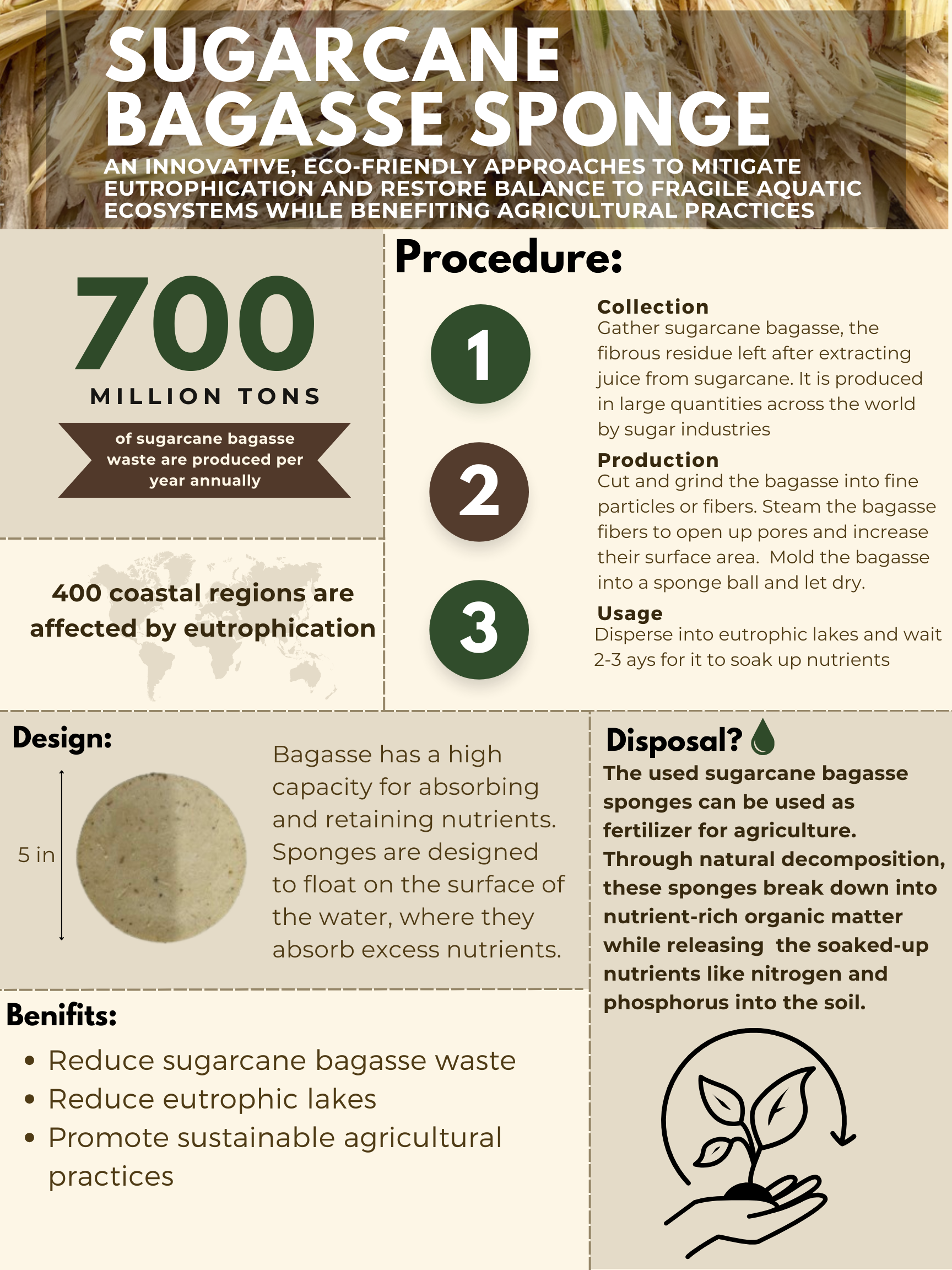With about 54% of the world's lakes and reservoirs suffering from eutrophication, the rapid growth of algae and aquatic plants triggers the depletion of oxygen levels, creating "dead zones" where aquatic life cannot thrive. The detrimental effects are unequivocal, with over 400 coastal regions worldwide reporting eutrophication-related issues, leading to altered ecosystems and diminished biodiversity. Sugarcane bagasse, the most abundant agricultural waste in the world, can be transformed into highly efficient sponges. Modification steps involve treating bagasse fibers to increase surface area and porosity to optimize pollutant trapping. Then, through molding techniques, the treated bagasse material undergoes formation into sponge-like structures. Following their efficient service in absorbing pollutants from eutrophic waters, the sugarcane bagasse sponges can be then used as a valuable resource for agricultural purposes. Through their natural decomposition processes, these sponges can be broken down into nutrient-rich organic matter, releasing vital nutrients into the soil. The resulting bagasse-derived fertilizer enriches soil fertility and structure, fostering healthier and more resilient crop growth. This virtuous cycle aids in curbing pollution in oceans while promoting sustainable agricultural practices.
Contact us
Thank you for your interest in contacting Future Engineers. We look forward to connecting with you!
General Inquiries
support@futureengineers.orgSponsorship Inquiries
sponsor@futureengineers.org
